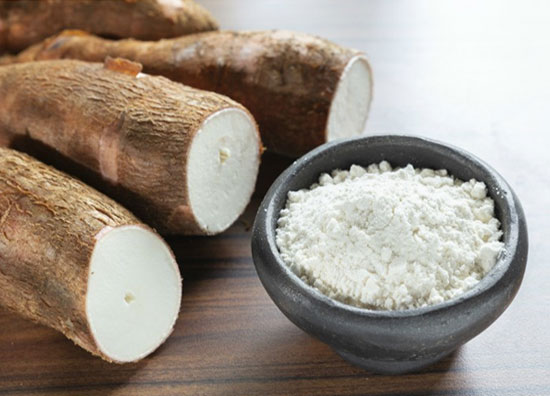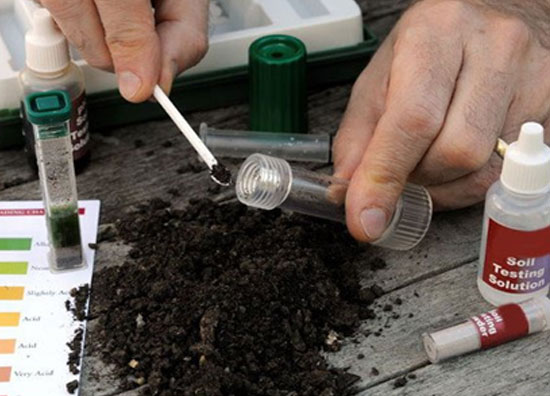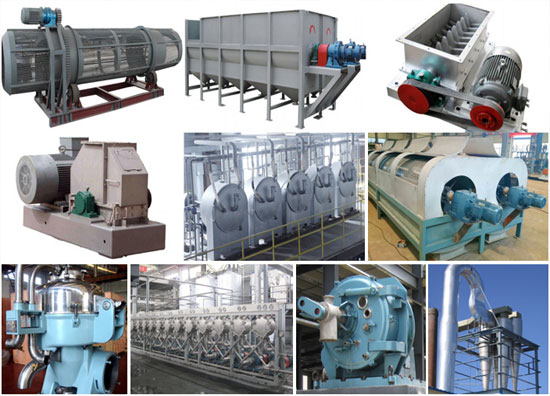CORRECT FARMING METHODS
Cassava Farming Process
Step 1: Selection of a Suitable Land Cultivation of Cassava
The first step in the cassava farming process is the selection of suitable land for cultivation.
Cassava can be grown on most soils; however, the best soils are sandy clay loam that is well-drained without a fluctuating water table,it is important to choose an accessible well-drained fertile soil.Cassava is a tropical crop, as a result, the most favourable growing conditions for cassava farming is in humid-warm climates.The best temperature for growing cassava is between 25 – 29°C and precipitations of between 1000 – 1500 mm.
Ideally, these weather conditions should be evenly distributed throughout the year.

Step2: soil test

You can take sample of the soil where you want to start your cassava farming to the soil laboratory to help determine whether the soil is suitable for high yield cassava variety.
Soil test is important for several reasons:
- to optimize crop production,
- to protect the environment from contamination by runoff and leaching of excess fertilizers,
- to aid in the diagnosis of plant culture problems,
- to improve the nutritional balance of the growing media and
- to save money and conserve energy by applying only the amount of fertilizer needed.
Pre- plant media analyses provide an indication of potential nutrient deficiencies, pH imbalance or excess soluble salts. This is particularly important for growers who mix their own media. Media testing during the growing season is an important tool for managing crop nutrition and soluble salts levels. To use this tool effectively, you must know how to take a media sample to send for analysis or for in-house testing, and be able to interpret media test results.
Limitations of Soil Testing
Soil testing can let you know where your soil needs treatment or improvement. However, a soil test cannot do any of the following: Tell you which crop to grow. Prevent poor crops caused by drought, disease, insects, too much water, or other problems.
The first step in soil analysis is soil sample collection. ... The most common method is composite sampling. Sub-samples are collected from randomly selected locations in the field. The sub-samples are thoroughly mixed to obtain a representative sample and analysis of this sample gives average values for the entire area.
For more information
Step 3: Land Preparation for Planting Cassava
- STUMP AND BUSH CLEARING

After successfully choosing a suitable site for cultivating your cassava, clear all bushes in the area immediately.The reason for clearing the bushes around the area is to allow more sunlight to the soil.Also, it helps to remove weeds and undergrowth which might otherwise compete with the growth of your cassava.By clearing the bush in the selected area using the burning method, you will destroy disease vectors and other parasites present in the soil.
In addition, the layer of ashes left after burning may help to increase the quantity of potassium salt in the soil available to the growing plants.Some people have argued that bush burning may also deplete soil nutrient as seen in this project research.They claim that as you are burning the bush, some essential nutrients will find their way out of the soil in the form of gases.The best way to avoid depleting the soil through bush burning is to rotate the method of clearing the vegetation in your cassava farm with other methods.As you are preparing the soil for cassava farming, mix the soil with dried animal manure or compost to increase soil fertility.

- PRE-PLANTING OPERATIONS

Most farmers prefer to plant cassava in well-prepared loose soil without any weeds.This facilitates vertical or inclined planting and reduces early weed competition. In Thailand the Soil is usually prepared by hired tractor using a 3-disk plow followed by 7-disk harrow, and sometimes ridging. The contractor prefers to plow the field in straight lines parallel to roads or plot borders, irrespective of slope direction. This method results in a loose and clean soil surface and high yields, but may cause severe erosion as well as formation of a “plow sole”, or compacted layer at 15-20 cm depth. This compacted subsoil impedes free drainage resulting in poor growth or root rot during the months of heavy rainfall. Moreover, the topsoil is rapidly saturated with water, which is followed by overland runoff and sometimes severe gully erosion. The regular use of a subsoiler will help to break the plow sole and improve internal drainage, which tends to improve plant growth during the height of the rainy season and increase yields. The subsoiler should be followed by either a 3-disk or 7-disk plow to reduce weed competition and loosen the soil.


Planting on top of ridges had no significant effect in root yield or starch content when planting occurred during either the rainy or dry season. However, in the dry season planting, germination was significantly better without ridges as ridging caused more rapid drying of the soil. On gentle slopes, contour ridging is an effective way to reduce run- off and erosion. However, when too much water accumulates above the ridge, this may cause water logging and lower yields, or the ridges may break causing serious gully erosion., in very weedy plots or in compacted soil, zero tillage generally resulted in lower yields and difficulty in planting, weeding and harvesting.
Some experiments have shown ridging to produce relatively lower yields than flat cultivation, but the work of weeding and harvesting is greatly reduced by ridge planting.For farmers in the rain forest and derived savanna zones where soils are prone to water-logging, planting on ridges or mounds is a general practice.
Your ridges or mounds should be at least 0.75m-1m apart.

Step 3: Planting the Cassava
- Selection and preparation of planting material
First Select varieties with multiple pest and disease resistance, high and stable root yields, and acceptable quality.Cassava is normally planted using stem cuttings, also called “stakes”. The stems are normally cut when the mother plant is 8-12 months old. Stakes derived from the lower and middle part of the stem had significantly higher germination rates than those derived from the upper part of the stem and 15-20 cm stakes had higher germination than shorter stakes of 5-10 cm length .Varieties differ markedly in the storability of their stems, but for most varieties stems should be stored upright in the shade, and for no longer than 1½-2 months to obtain at least 80% germination; other varieties lose their germination capacity already after 3-4 weeks of storage.


- Planting method
If the soil is loose and friable,stakes can be planted vertically or slanted by pushing the lower part of the stake about 5-10 cm into the soil. Stakes can also be planted horizontally at 5-7 cm depth by digging individual holes, or by making a long furrow, laying the stakes down and covering with soil. The latter method is common in heavy clay soils or with zero-or minimum-tillage methods of land preparation. When the soil is well prepared and friable, planting vertically or inclined is faster than planting horizontally, but care should be taken that the eyes or buds on the stakes face upward; with horizontal planting this is of no concern.
In sandy clay loam soils in Rayong, Thailand, planting vertically or inclined produced significantly higher root yields than planting horizontally .this was especially the case when stakes were planted in the early dry season (Nov), when horizontal planting resulted in slower and a significantly lower rate of germination. Research conducted in two locations in China indicate that vertical planting resulted in the highest germination percentage but that inclined planting produced the highest yields.
- Horizontal method of planting cassava
- Vertical method of planting cassava
- The inclined method of planting cassava
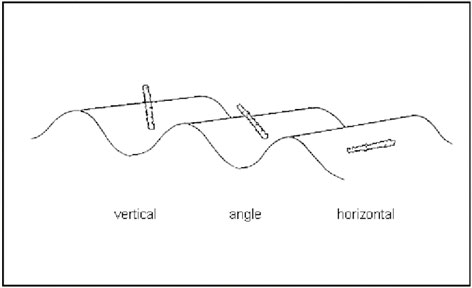

- Plant population and spacing
For maximum root production cassava is usually planted at a population of 10,000 plants/ha in fertile soil, and at about 16,000 plants/ha in infertile soil where plant growth is less vigorous. At 10,000 plants/ha, stakes are generally planted at 1.0x1.0 m for monoculture cassava or at wider row spacing (up to 2 m between rows) and closer in-the-row spacing (down to 0.5 m) for intercropping. The wider row spacing allows 1-3 rows of the intercrop to be planted between cassava rows. At a higher plant population of 16,000 plants/ha, cassava is generally planted in a square pattern of 0.8x0.8 m, but this can also vary to 1.2x0.52 m to allow for easy access by machinery or for intercropping. In general, the planting pattern can be varied somewhat without affecting yields as long as the plant population is maintained near the optimum level, depending on soil fertility and the branching habit of the variety. If some stakes do not germinate, the plant stand is reduced
As long as the plant stand is above 70-80% of maximum, yields may not be significantly affected as plants surrounding the open space will grow more vigorously and have higher yields, thus compensating for the lower plant stand. If possible, missing plants should be replaced by new stakes or transplants within 2-3 weeks from the original date of planting.

- Time of Planting
In tropical regions with distinct dry and wet seasons and a mono-modal rainfall distribution, the best time to plant is early in the wet season, i.e. as soon as enough soil moisture allows for adequate germination of planted stakes. highest yields were obtained with planting in May, at the start of the rainy season. In those areas with a bimodal rainfall distribution, such as in Kerala, India, planting at the start of the second rainy season, i.e. in Aug or Sept, will also result in high yields.
However, high yields may also be obtained when cassava is planted towards the end of the wet season. highest yields in Rayong, Thailand were obtained when cassava was planted in Aug-Nov. In this case, plants get well established during the last months of the rainy season, grow slower during the dry season and have an additional period of fast growth during the following wet season. In this case, weed competition tends to be less severe as plant canopies are already well-established during the early part of the second wet season.
Step 4: Weeding of Cassava Farm
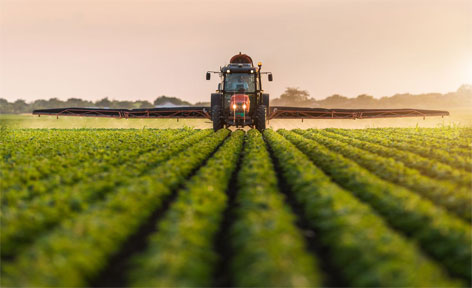
Cassava is a poor competitor and may suffer serious yield losses if the crop is not adequately weeded during the early stages of plant growth. In general, the crop should be weeded 2-3 times during the first three months or until canopy closure. Weeding is most often done by hoe, by animal-drawn cultivator or hand tractor, but can also be done by a tractor-mounted cultivator or with herbicides. Weed competition can also be reduced by adequate and early application of fertilizers to speed up canopy closure, by intercropping, and by planting in the early dry season when weed growth is less vigorous. When herbicides are used it is recommended to apply metholachlor at 1.5 kg a.i./ha immediately after planting, followed by 1-2 hand weedings or spot application of Paraquat or Glyphosate, using a shield over the applicator to prevent damage to the cassava plants. Alternatively, Nguyen HuuHyetalshowed that application of 2.4 l/ha of Dual as a pre-emergence herbicide in Vietnam increased cassava yields and net income as compared to hand weeding.
Step 5: Fertilization of Cassava Plantation

While cassava can grow better than most other crops in very infertile soils, the crop does respond well to the application of chemical fertilizers or animal manures. Like any other crop, cassava extracts nutrients from the soil during plant growth and some of these are removed in the root harvest, while others may be returned to the soil in the crop residues, such as leaves and stems.
Research on the best time and method of fertilizer application usually indicates that best responses are obtained when all fertilizers are either applied at time of planting or at one month after planting. Alternatively, all of the P and half of the N and K are applied at planting and the remaining N and K applied at 2-3 months after planting.
The kinds and quantities of fertilizers required by a cassava crop depend on the nature of the soil.soit is recommended that use soil test to improve fertilizer requirement.

Step 6: Harvesting the Cassava Tubers
Cassava can be harvested any time, but the roots are usually harvested between 6 and 18 months. Some early-maturing varieties can be harvested at 6 MAP for direct human consumption, but most industrial varieties are harvested between 8 and 12 MAP. Table 6 indicates that root yields nearly tripled between 8 and 18 months and that starch contents increased substantially between 8 and 10 months. Harvesting cassava after 18 months provides an income only every 1½ years, but at a considerable saving in terms of production costs. Harvesting early, at 6-8 MAP, however, allows for double cropping cassava with a subsequent short-duration crop of rice, sweet corn.
Cassava is usually harvested by removing the tops at 20-30 cm above the ground and using the remaining stump to pull up the roots. If the soil is too hard, the roots can be lifted out of the ground with a pointed metal bar or a metal fork attached to a wooden stick used as a lever. Roots can also be dug out with pick, hoe or shovel. In areas where labor is expensive or the soil is too hard during the dry season, farmers in Thailand now use a tractor-mounted cassava harvesting tool that loosens the soil and lifts up the roots for easy gathering by hand. In Malaysia a more sophisticated cassava harvesting machine will dig the roots and deposit them in an attached wagon. After pulling up the root clumps, the individual roots are cut off from the stump and packed in baskets or sacks for transport to the house, drying floor or starch factory. To prevent spoiling, fresh roots should be processed within 2-3 days after the harvest.
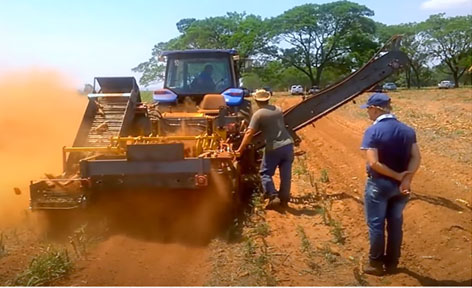
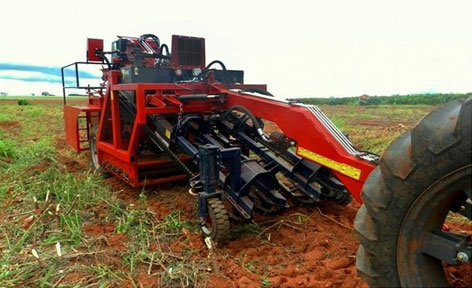
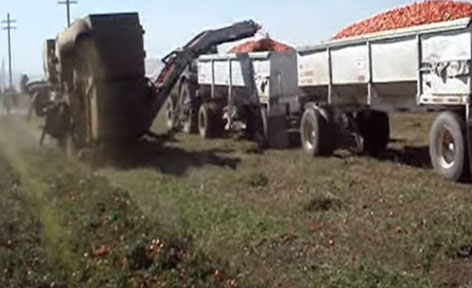
Cassava Yield
The average yield per hectare is 10.6 tonnes. In Nigeria, cassava production is well-developed as an organized agricultural crop. It has well-established multiplication and processing techniques for food products and cattle feed. There are more than 40 cassava varieties in use.
What we can do ?
We achieved 80 ton per hectare in Nigeria Anambera
The actual Nigerian Farm

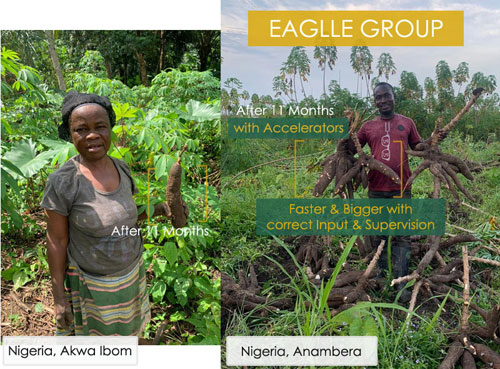

The actual Nigeria Farm

Other services & information :
Our Solutions Empowering the Food Value Chain
Eagllegroup offers an ecosystem of products and services that helps everyone connected with the Food Value Chain (farmers, producers, financial institutions, state governments, etc.) make smarter decisions. This results in lower production costs, reduced lending risk, better yields, efficient marketing, increased incomes and boosting food security.
Lower Production Costs
Reduced Lending Risk
Better Yields
Efficient Marketing
Increased Incomes
